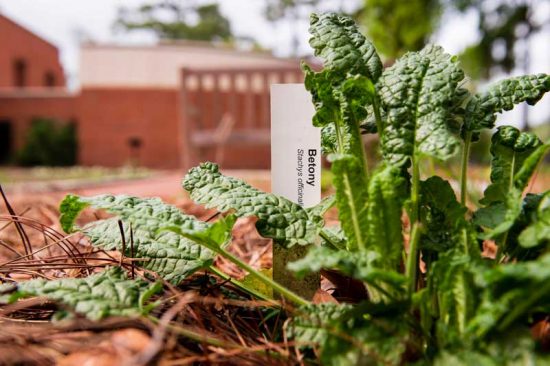Armstrong Campus Plants New Medicinal Garden

The Armstrong Campus features a new garden of plants useful for medicinal purposes in historical and even contemporary times. Rosemary, parsley, castor beans and foxglove are just a few of the plants with healing properties that fill the physic garden, a type of herb garden.
“Physic gardens are obviously not a new idea, and our garden is modeled after the Sibbald Physic Garden in Edinburgh, Scotland, where the plants are organized by historical era,” said Philip Schretter, superintendent of grounds operations. “More specifically, our garden is defined by authors that lived during notable time periods related to herbalism. For example, the era of the early herbalist features plants included in the writings of Roman and Greek herbalists.”
The garden is a unique way to gain the interest of students and make learning fun. Schretter noted that all of the plants represent the state of medical care throughout history.
“It was interesting to read which maladies were more prevalent in each time period based on what cures the plants provided,” he said. “The 16th and 17th centuries focuses on plants described by authors living during the rise of herbalism in Europe. The 18th and 19th centuries contains plants featured by writers describing the discoveries of new plant treatments from the Americas, and the 20th and 21st centuries features plants described in modern herbals and the use of plants in medicine today.”
The garden is also the first in the 268-acre Armstrong Campus Arboretum to use QR codes that will link to a page on the Arboretum’s website with information about each plant. The garden is located near Ashmore Hall.
